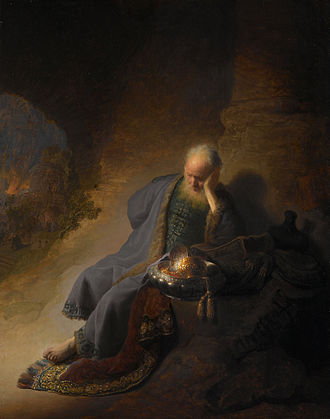Jeremiah, known as the “Weeping Prophet,” was one of the major prophets in the Old Testament, and his story is recorded in the Book of Jeremiah. His prophetic ministry took place around the 7th and 6th centuries BCE during a turbulent period in Judah’s history, including the Babylonian siege and the eventual destruction of Jerusalem and the Temple in 586 BCE.
Key Aspects of Jeremiah’s Life and Ministry
1. Calling and Reluctance:
– Jeremiah was called by God at a young age, even before he was born “Before I formed you in the womb I knew[a] you, before you were born I set you apart; I appointed you as a prophet to the nations.” (Jeremiah 1:5). When God first spoke to him, Jeremiah felt unprepared and protested that he was too young to be a prophet. However, God reassured him, saying, “Do not be afraid… for I am with you” (Jeremiah 1:8).
2. Message of Warning
– Jeremiah’s primary message was a call for repentance. He warned the people of Judah about their disobedience, idolatry, and failure to follow God’s law, predicting that they would face consequences, including invasion by foreign powers if they didn’t turn back to God. His warnings often made him unpopular, and he faced intense opposition from the leaders of Judah.
Read also Understanding Christian Values: How to Live a Christ-Centered Life
3. Symbolic Acts and Parables
– To communicate his prophecies, Jeremiah used symbolic actions. For example, he buried a linen belt to show how Judah’s pride would become useless, and he wore an ox yoke to symbolize the impending Babylonian captivity (Jeremiah 27). These symbolic acts were intended to visually reinforce his prophecies.
4. Suffering and Perseverance
– Jeremiah’s life was marked by suffering, earning him the title of “Weeping Prophet.” He experienced rejection, imprisonment, threats on his life, and feelings of isolation. However, he remained faithful to his mission, even as he lamented his own sorrows and the suffering of his people in heartfelt prayers and confessions (often referred to as “Jeremiah’s Laments”).
5. Promise of Hope and Restoration
– Amid his warnings, Jeremiah also brought messages of hope. He prophesied a future restoration and a “New Covenant” where God would “put His law within them and write it on their hearts” (Jeremiah 31:33). “This is the covenant I will make with the people of Israel after that time,” declares the Lord. “I will put my law in their minds and write it on their hearts. I will be their God, and they will be my people. This covenant would be characterized by a more intimate relationship with God, promising forgiveness and a return from exile.
Read also Martyrs of Faith: Lessons from the Forty Martyrs of Sebaste
6. Legacy
– Jeremiah’s life and prophecies deeply influenced both Jewish and Christian thought. His concept of the “New Covenant” is foundational in Christian theology, symbolizing hope, transformation, and divine mercy even in the darkest times.
Jeremiah’s story is one of resilience, faithfulness, and compassion. Despite his challenges, he continued to serve as a voice for truth, justice, and divine love, embodying the heart of a prophet deeply connected to his people and his God.
